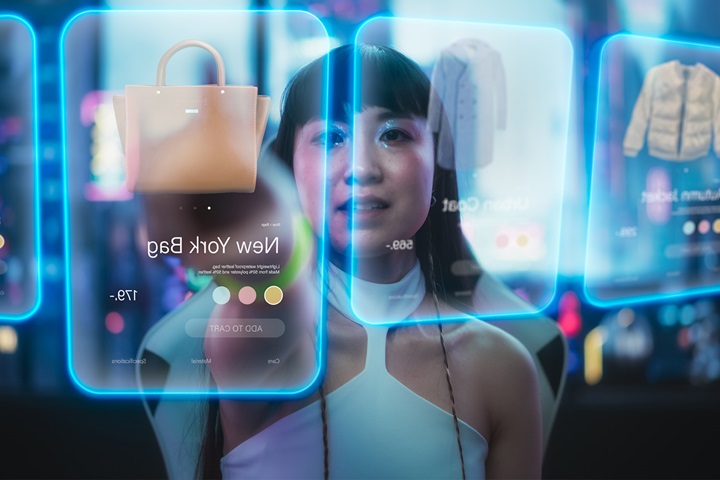Most of the retail media network (RMN) conversation in the industry centers on retail margins, incrementality, new-to-brand metrics, first-party data capture, new targeting capabilities, and attribution wins. But what about the shoppers who actually experience these ads on their shopping journey? What do they want, and not want, from retail media? Thanks to a wave of recent shopper-focused studies, we now have clearer answers.
What shoppers want: insights to rethink your RMN strategy
Shoppers want help, not hype. A 2024 Vibenomics/Harvard Business Review study found that 83% of shoppers say retail media should help them discover new products and save time, not just push branded promotions. Relevance and utility matter more than frequency.
Case in point: Danone’s launch of Cold Foam Creamers with Walmart Connect’s full-funnel campaign integrated in-app ads, display banners, and in-store messaging that helped shoppers find ways to use the product. It also provided brand context that supported discovery instead of just pushing price markdowns.
Repetitive ads turn are a turnoff. Criteo’s 2023 Shopper Sentiment Index reports that 62% of US shoppers find repeated exposure to the same retail media ad across multiple channels annoying and intrusive, particularly if the ad doesn’t feel timely or relevant.
Case in point: Mondelez used Walmart Connect’s Search Incrementality feature to optimize ad frequency and rotate creative assets seasonally. Doing so helped dramatically reduce ad fatigue while increasing engagement and conversions 53% year over year and incremental ROI 29%.
Product detail is more valued than discounts. A 2024 Circana survey found that shoppers are more likely to respond to RMN content that includes detailed product benefits, reviews, and how-to guidance than a generic discount. Nearly three-quarters of respondents (71%) said they want RMN ads to help them make informed decisions.
Case in point: Around 45% of Danone’s Cold Foam Creamers growth was driven by Walmart Connect’s product-focused ads, including video overlays and carousel units that highlighted flavors, prep suggestions, and benefits.
In-store RMN content must feel native. The Path to Purchase Institute’s 2024 Shopper Engagement Study revealed that 68% of shoppers said they are more likely to engage with digital in-store screens that blend helpful content (recipes, usage tips, etc.) with ads rather than stand-alone promotional messages.
Case in point: Walmart Connect is piloting in-store screens that showcase meal inspiration content like taco night recipes alongside featured products. Brands like Danone and Mondelez have created companion content tailored to these formats
Implications for retailers and brands
These insights send a clear signal: It’s time for retail media to evolve from simply an advertising tool to a potent content experience. Here’s how retailers and CPG brands can act.
For retailers
Retailers must treat their retail media inventory like an actual content platform. That means enabling campaigns that inform and inspire, not just promote. In-store screens should mix helpful ideas with brand messages. Think “How to make taco night better?” sponsored by Old El Paso, not just “10% off salsa.” Measurement strategies should evolve to track engagement and influence, not just impressions.
Also, retailers market to moments. It’s 4 p.m. on a school night, and most parents don’t know what to do for dinner. Mission and moments overlap, and represent another opportunity for retail media to help parents solve this perpetual problem.
For CPG brands
CPG marketers should rethink their creative briefs for RMNs. Instead of recycling national TV or social spots, brands should tailor content to moments in the shopper journey: decision aids, solution building, and category education. Brands like Unilever and Mondelez are already piloting shoppable how-to content and AI-personalized snack pairings in RMNs.
For both
Co-developing content is key since shoppers think in missions, not channels. Brands and retailers must jointly develop retail media content that supports the shopper’s mission, whether that’s exploring new products, planning meals, or staying under budget.
Andy Murray, a consumer brand, agency, and retail leader who now leads BigQuest, shared his concerns with me about the missing voice of the shopper when it comes to retail media. “When we conducted retail media research with the University of Arkansas, we asked the obvious question [about] how brands [could] define a more relevant consumer experience. The answers were all over the road. This question has taken a backseat for our industry.”
Retail media has the power to turn every shelf into a story, every screen into a solution, and every moment into a mission. But only if we listen to the shopper. If retail media networks want to scale with integrity, they must stop optimizing for impressions and start optimizing for impact.
For more on retail media networks, check out our new study, Kantar's Retail Media Networks 2.0: Resetting the Value Proposition.




